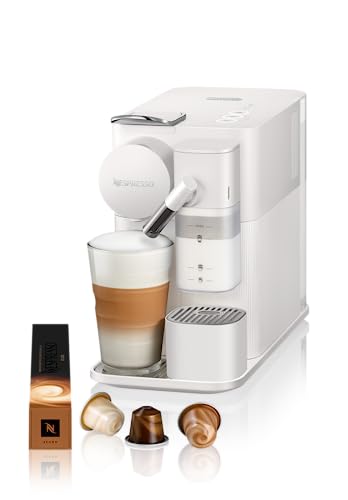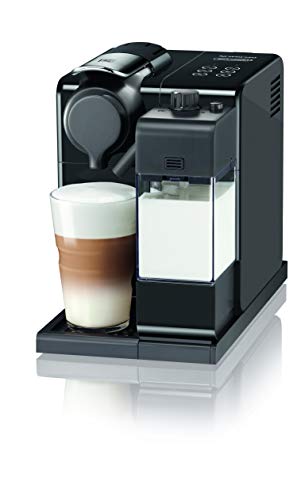Five Killer Quora Answers On Single Serve Espresso Machine
페이지 정보

본문
 Single Serve Espresso Machine
Single Serve Espresso Machine If you prefer a cup of coffee made just for you, a single serve espresso machine is a great option. Simply refill the water container and add your preferred pod or capsule, then hit the button.
If you prefer a cup of coffee made just for you, a single serve espresso machine is a great option. Simply refill the water container and add your preferred pod or capsule, then hit the button.The top coffee pod machines are fast, convenient and easy to use. Some machines also offer extra options like hot tea or chocolate.
Precise Extraction
The name suggests that espresso is created by forcing hot water through finely ground coffee under pressure that is high. This is a very different process from drip coffee brewing, in which water is allowed to flow freely through the ground. Espresso extraction requires an exact balance of several factors such as dose, tamp and grind.
The first step to making an espresso shot that is good is heating your portafilter (the round metal part that holds the grounds of coffee). Vigil usually weighs her portafilter prior to when she packs it with coffee, which helps ensure she's using the right amount of beans. She then tamps the grounds to create an adequate amount of solidity to get all the flavors from the beans. She employs 30 pounds of force to tamp the grounds, which makes for a consistent, flavorful espresso.
It's also essential to be aware of your espresso's color and consistency. The first few seconds of a well-extracted shot should be dark gold, and then it should change to a lighter gold as the 25 second mark is near. Blonding is a term used to describe the process of blending. A shot that hasn't been blonding properly could be acidic or bitter.
Some of the machines we've tested in our tests, such as the Keurig K-Supreme Smart and the Nespresso Vertuo Plus, let you set a brew period to control the speed at the time your coffee is extracted. This is a fantastic feature, but it won't be able to compensate if the beans aren't ground properly or roasting.
You can control the extraction rate in some machines, like the Gaggia semiautomatic. This can make a big impact on the flavor of your espresso, but it's not a solution for poor roast or a bad grind.
Many of the machines in our tests come with built-in options for milk frothers or a steam wand, which makes it simple to create espresso with steam or frothed milk. This is particularly beneficial for drinks like cappuccino or latte that are often served with steaming milk. Some machines, such as the Nespresso Inissia and the Cuisinart on Demand also come with reuseable pods that help cut down on the waste.
Variety of drinks
The top single cup coffee machines-serve espresso machines can be used to produce frothed or steamed milk for many espresso-based drinks. A good machine can create rich, creamy cappuccinos as well as lattes with just a touch of one button. Some models even come with an automatic milk maker, which means you don't need to have a separate tool at the counter.
The top espresso and coffee makers also offer other beverage options, like Iced drinks. Some are equipped with grinders to grind beans freshly, while others work with a carafe that holds multiple servings at a time. Certain models come with adjustable settings, allowing you to select your preferred water temperature and strength. The Nespresso Essenza Mini is the most popular model in this category. It can make double or lungo shots and a variety drinks with a touch of a button.
If you're looking for more sophisticated drinks then the Philips Breville Intuo XS makes it easy to make cappuccinos and lattes. It is simple to use and intuitive, with five popular drinks accessible at the touch of a button. The brewing process only takes about a minute and will produce an amazing tasting espresso without any effort from you. It is also environmentally friendly because it reduces the amount of coffee pods you will need to purchase.
If you are a fan of experimenting with your own creations then consider investing in a versatile espresso maker that can make both single-shot and double-shot drinks. The top espresso and coffee maker brands have an easy-to-use interface that lets you alter the size, strength and brew time of your drink with the touch of a button. You can also select a wide variety of coffee beans, from traditional to exotic varieties and blends. Some also have a grinder for fresh grounds that can offer greater control over the taste of your coffee than pre-packaged pods.
Convenience
One of the major benefits of single serve espresso machines is their ease of use. They're quick to make, require minimal cleanup, and eliminate the need for measuring ground coffee or coffee beans. They're also designed to make only one cup, there are no leftovers.
Machines that make use of capsules and pods (like Keurig or Nespresso) that are pre-packaged with the appropriate amount of coffee ground for one cup, operate on the same principle. All you need to do is choose your drink of choice, insert the pod into the machine, and then press a button. Many machines also have the capacity to brew tea and hot cocoa, and some include milk frothers to make it easy to create of milk-based drinks.
These machines are useful however they also have a cost in terms of cost and environmental impact. Pods are generally more expensive than ground or bean to cup coffee and, in many cases, they will be plastic-packaged, which means you'll have to find ways to recycle them. This can add up over time, and is something you should be aware of when buying pod-based coffee makers.
Other models are more flexible in terms of the size of the brewing and can accommodate different types or grounds. They are also known as "ground-to cup" machines. The ground coffee is put in a coffee in a filter basket on the top of the machine or, if you have an espresso-style machine, into the portafilter. It resembles an old-fashioned coffee pot and is similar to the filter of an espresso machine. These machines are the closest to the traditional barista's taste, however they can be more expensive and complicated than those that use capsules or pods.
Additionally, there are super-automatic and manual machines that work similar to the typical coffee maker but with a higher degree of automation. They can automatically dispense coffee and other beverages, and can also handle basic maintenance tasks such as decaffeinating or descaling. These tended to get our highest Lab scores for their user-friendliness and reliability. They can be difficult to keep in good condition.
Maintenance
As a professional barista you're aware that your equipment should be regularly cleaned and descaled to make great coffee. You should also backflush your espresso group heads each evening and clean the machine to remove any milk residue or loose grounds of coffee. These routine tasks might seem tedious, but they are crucial to the durability and quality of your equipment.
Cleaning your single serve espresso machine is essential not just for hygiene but for the flavor of your espresso. If you don't clean your machine, it may lead to impurities and bacteria being created that affect the taste and aroma of your coffee. Fortunately, cleaning an espresso machine isn't as laborious as you might think. A few minutes a day and a thorough cleaning every month will keep your machine in top condition for many years to come.
First, you'll need to empty the drip tray (this is usually a simple task that can be done in a single step). Then, you'll need wipe down all the internal components of the machine. Use a mild soap and water with a sponge to clean the machine, particularly the hot boiler and portafilter. After you've finished, wash the inside and outside of your machine using an unclean towel or cloth.
The most crucial part of the maintenance process is cleaning your espresso machine regularly. A few tablespoons of descaler along with a backflush will keep your machine free of any hard-water deposits that could negatively affect the flavor of your espresso. Descale your coffee maker every 300 cups, or at least once every week, based on how frequently you use it.
To perform a backflush you will need to remove the steam wand, group heads and other components of your espresso maker and soak them in a solution of water and espresso machine soap for at least 30 minutes. After the baskets and portafilters are clean and dry, you can run fresh water through them. You can also backflush the steam portafilter and scrub it with nylon brushes. Then, clean the draining hose with a diluted solution of water and cleaner.
- 이전글Nine Things That Your Parent Teach You About Lightweight Double Buggy 24.08.10
- 다음글20 Up-And-Comers To Follow In The Medical Malpractice Law Industry 24.08.10
댓글목록
등록된 댓글이 없습니다.
